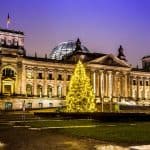In The Art of Travel, De Botton suggested there are no more places left to discover. With the overwhelming amount of information available on each and every major destination around the world it is likely that I could discover the major landmarks just as well from my computer than walking through them. Of course travellers will argue that first-hand experience is what matters, even if millions of people have had the same opportunity. While exploring the best reasons to travel I had emphasized the quest for the “experience”:
The tourist that never leaves the beaten path is likely only exposed to an esterile experience that has been washed out of all its original power.
One could argue that the splendour of any famous landmark is constantly diluted by the ongoing attack of mass tourism, misguided by a market saturated of travel guides that most of the times reference the same top 10 or 20 landmarks not to be missed, while telling us every snippet of knowledge that travellers must know about these places, cancelling every attempt to make that experience unique.
The age of discovery is over. Every corner of our planet has been documented ad nauseam… or has it? The availability of super detailed guides and maps for every city in the world would certainly give us this illusion. But I bet that for every map which highlights 10 “points of interest”, there are another 10 not so interesting. And yet, I believe these are the places that will increasingly attract the independent traveller. The key to their rise will be their ability to offer new and unique experiences that may not include master art or landmark architecture, but showcase the modus vivendi of little known micro-regions and their people.
You probably remember that little neighbourhood in a foreign city that after an easy stroll made you comment “I could live here”. Some people will qualify them as charming and others will think of them as hip. I’ll venture a generalization and suggest that they’ve moved away from the pragmatism that governs every aspect of modern life and have found a way to decorate themselves with elements that seem superfluous or even luxurious. What sells us is the fact that their inhabitants have been able to transcend the mundane. Where are they? Well, that is where the discovery starts.
Just a few days ago I published a photo of Coyoacán in Mexico City, a wealthy neighbourhood in the south of the city that is often cited in travel guides. Most people will settle for visiting the main square, which is where all the action takes place. What few people have discovered is that just a couple hundred meters away there is a little public garden surrounded by cobblestone streets where the pace of life seems to slow down. I used to walk through these streets almost every day without giving credit to their splendour. The arrhythmic sound of shoes walking on stone was clearly heard in a city that is otherwise obnoxiously loud. I’m sure a few people have said they could live there. And yet the reviews found on the web about this corner of the city are sparse and uninviting.
Recognizing that the charm of these streets on their own is not sufficient to create a full experience and elaborating on the need to reinvent tourism, I suggest a well orchestrated effort is required to bundle all the various elements that will attract the visitor. In the same way that top hotels create an entire experience around their brand, these micro-regions need to be organized so visitors can immerse themselves into the perfect life-style balance achieved after centuries of fine tuning.








I think you’re right. What will attract the visitor now is not the number of public attractions available within walking distance, it’s more the unique experience you will get from your trip. Even in bigger cities like Paris and New York, I find myself looking for something smaller, something that has a real human scale. And I don’t care if I miss the Eiffel Tower or the Empire State Building, at the end of the day, I better remember being hungover and trying to drink coffee in my shitty hotel room after a night of crazyness, rather than becoming blinded by Nikon shots on Champs-Élysées.
I also think people are more interested in lesser known cities now, like Coyoacán you just mentioned. Every time I pick up Monocle, I discover a new place that I’d like to see – yes, I’d looove to go to Kazakhstan. Or Teheran. And even in North America and Europe, you can find those smaller cities. Don’t ask me why, but I think it’s just a natural evolution in tourism (or a possible counter-effect of globalization?).
I dare you to find information on Holbox, an island in its natural state, in Quintana Roo. I discovered that place by accident, but it is like a small star next to that Sun that is Cancun that blinds everything in the surrounding; yet Holbox has to be my current favourite destination, and I met a bunch of Swiss girls that actually decided that ‘they could lived there’ so they sold everything back in Switzerland, and opened a small hotel (a bunch of shacks, still, lovely). But please do not tell anybody, I do not want hundreds of spring breakers polluting my little paradise.
Daviel “real human scale” is what I was going for. I also concur that this is just another evolution of tourism, although I don’t expect everyone will go for it. Curiously, Monocle has also been an important source of inspiration for my “global citizen” posts.
Manuel: I’m sorry that my celebrity status and the millions of people that read my blog will spoil your little paradise. Hey fans, use your GPS and head down to 21.55,-87.25. Tell the swiss girls that Manuel sent you.
Pingback: you don’t know mexico
Hi, I agree with the post and all comments posted, I recommend for foreign visitors the city of San Juan del Rio, located 150km to the north of Mexico City, it is like you wanted a small city and many communities of people that have a nice life.
In my blog zensoriales.com, we try to notice what happen in our city, there are videos and photos, enjoy!
Pingback: you don’t know mexico » Global Culture
Pingback: the st lawrence market guide » Global Culture
Pingback: the local advantage » Global Culture